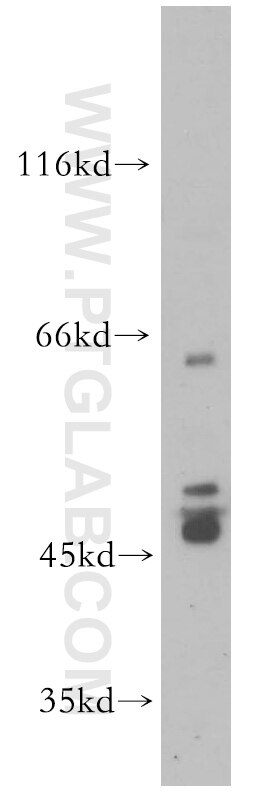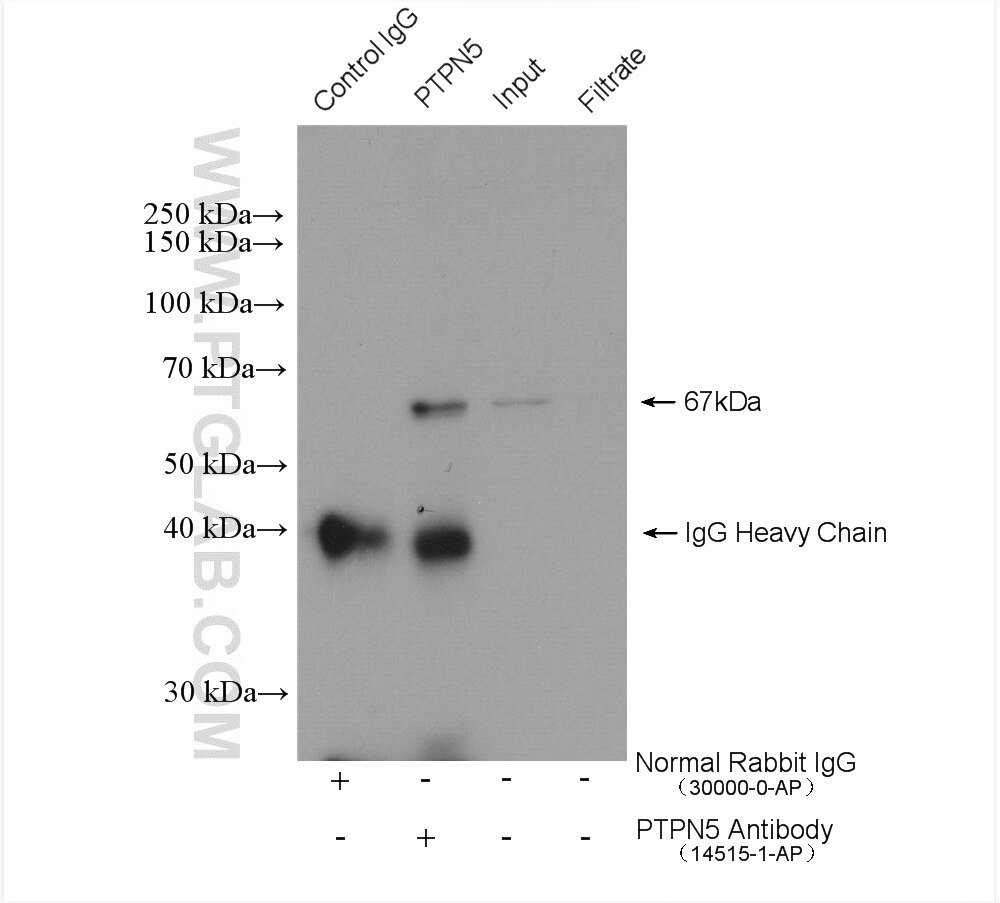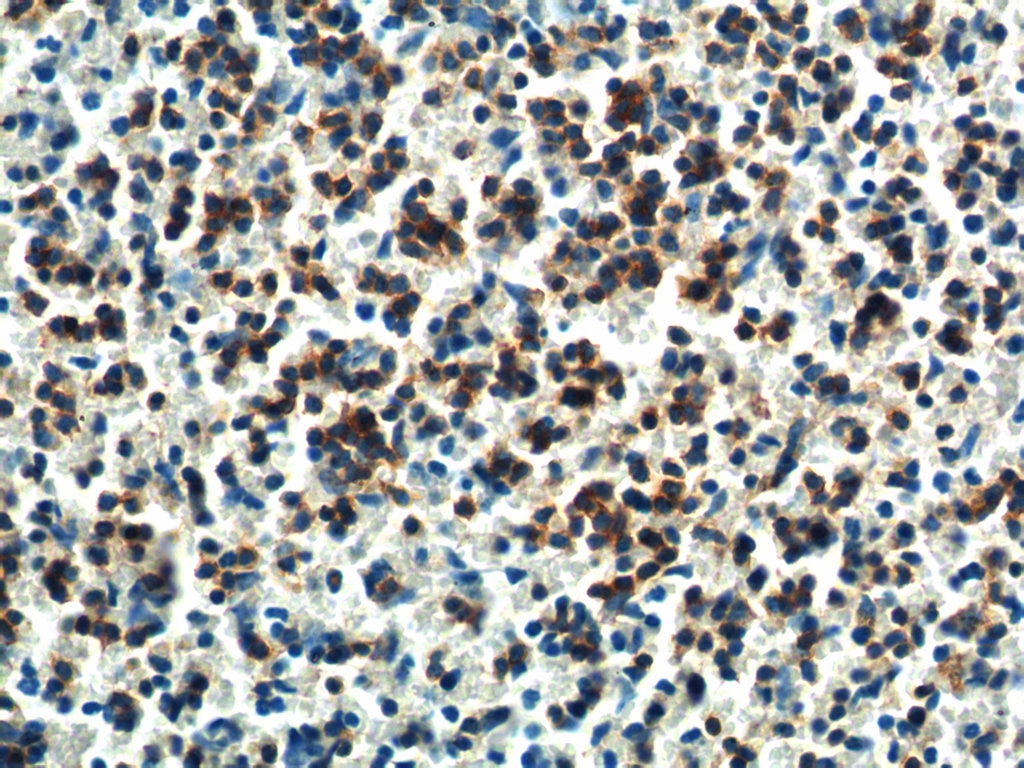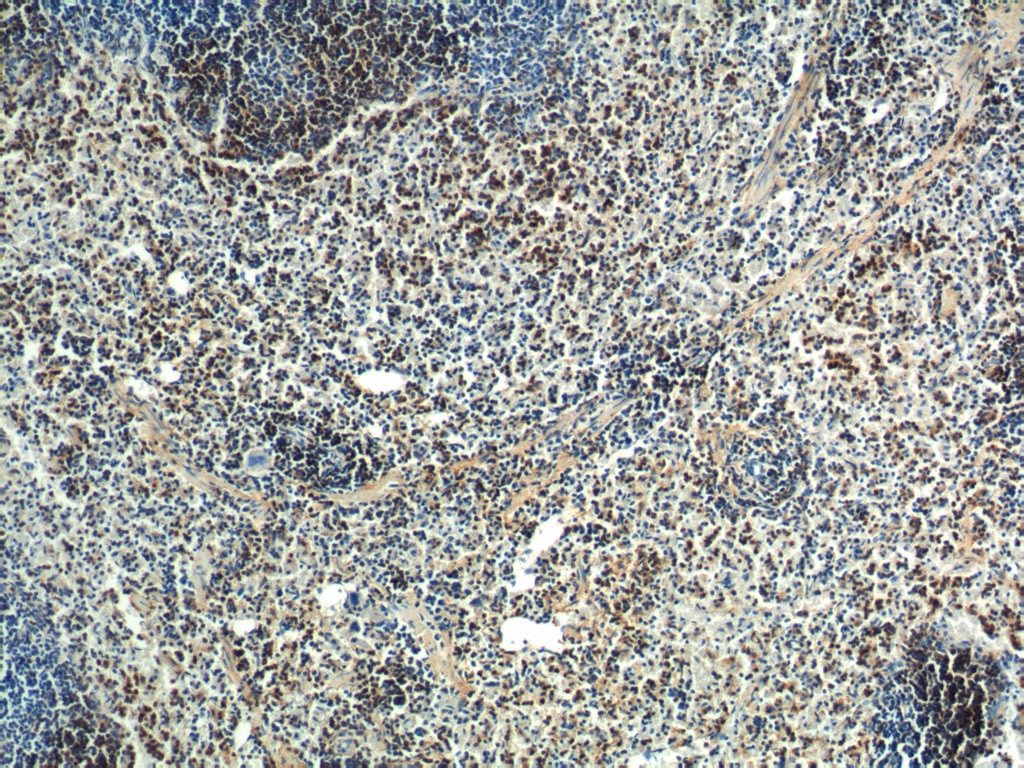PTPN5 Polyklonaler Antikörper
PTPN5 Polyklonal Antikörper für WB, IP, IHC, ELISA
Wirt / Isotyp
Kaninchen / IgG
Getestete Reaktivität
human, Maus, Ratte
Anwendung
WB, IP, IHC, ELISA
Konjugation
Unkonjugiert
Kat-Nr. : 14515-1-AP
Synonyme
Geprüfte Anwendungen
| Erfolgreiche Detektion in WB | HL-60-Zellen |
| Erfolgreiche IP | Maushirngewebe |
| Erfolgreiche Detektion in IHC | Mausmilzgewebe Hinweis: Antigendemaskierung mit TE-Puffer pH 9,0 empfohlen. (*) Wahlweise kann die Antigendemaskierung auch mit Citratpuffer pH 6,0 erfolgen. |
Empfohlene Verdünnung
| Anwendung | Verdünnung |
|---|---|
| Western Blot (WB) | WB : 1:200-1:1000 |
| Immunpräzipitation (IP) | IP : 0.5-4.0 ug for 1.0-3.0 mg of total protein lysate |
| Immunhistochemie (IHC) | IHC : 1:50-1:500 |
| It is recommended that this reagent should be titrated in each testing system to obtain optimal results. | |
| Sample-dependent, check data in validation data gallery | |
Veröffentlichte Anwendungen
| WB | See 1 publications below |
Produktinformation
14515-1-AP bindet in WB, IP, IHC, ELISA PTPN5 und zeigt Reaktivität mit human, Maus, Ratten
| Getestete Reaktivität | human, Maus, Ratte |
| In Publikationen genannte Reaktivität | Ratte |
| Wirt / Isotyp | Kaninchen / IgG |
| Klonalität | Polyklonal |
| Typ | Antikörper |
| Immunogen | PTPN5 fusion protein Ag5974 |
| Vollständiger Name | protein tyrosine phosphatase, non-receptor type 5 (striatum-enriched) |
| Berechnetes Molekulargewicht | 64 kDa |
| Beobachtetes Molekulargewicht | 46-50 kDa, 61-66 kDa |
| GenBank-Zugangsnummer | BC064807 |
| Gene symbol | PTPN5 |
| Gene ID (NCBI) | 84867 |
| Konjugation | Unkonjugiert |
| Form | Liquid |
| Reinigungsmethode | Antigen-Affinitätsreinigung |
| Lagerungspuffer | PBS with 0.02% sodium azide and 50% glycerol |
| Lagerungsbedingungen | Bei -20°C lagern. Nach dem Versand ein Jahr lang stabil Aliquotieren ist bei -20oC Lagerung nicht notwendig. 20ul Größen enthalten 0,1% BSA. |
Protokolle
| PRODUKTSPEZIFISCHE PROTOKOLLE | |
|---|---|
| WB protocol for PTPN5 antibody 14515-1-AP | Protokoll herunterladen |
| IHC protocol for PTPN5 antibody 14515-1-AP | Protokoll herunterladenl |
| IP protocol for PTPN5 antibody 14515-1-AP | Protokoll herunterladen |
| STANDARD-PROTOKOLLE | |
|---|---|
| Klicken Sie hier, um unsere Standardprotokolle anzuzeigen |





